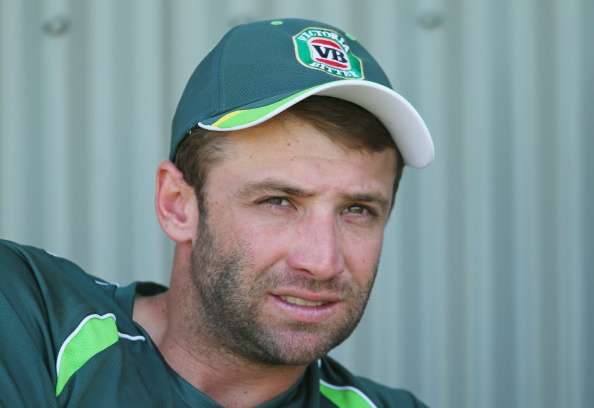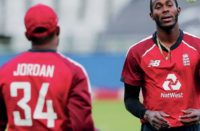Tristan Lavalette revisits the unique and developing talents of a cricketer we lost way too early
It has been one year since the death of Phil Hughes. Batting in a Sheffield Shield match against New South Wales on the eve of the Australian Test season, and having compiled an impressive 63, Hughes was felled by what initially appeared a fairly innocuous bouncer from paceman Sean Abbott.
Hughes died two days later. If there is any solace, Hughes was playing the sport he loved in his final moments. Unfortunately, it was a freak accident. Only the cruel twists of fate could be blamed.
But, with the anniversary, everything has resurfaced this week – we’ve revisited the grief, anguish, anger, emptiness, numbness and collective sadness that were overwhelming one year ago. But it is also an opportune time to celebrate Hughes’ career and ponder what could have been. It’s easy to believe he would have carved out the legendary career that always seemed his destiny.
Still, Hughes’ fleeting career will always endure. Raw statistics may paint a different picture, but Hughes had a productive record considering he was tantalisingly about to enter the traditional peak years for a batsman. Eerily, Hughes played 26 Tests and scored 26 first-class centuries. He died days from his 26th birthday.
He averaged just under 33 in Tests, and slightly more in 25 ODIs. His five international hundreds included memorable twin tons against a vaunted South African attack in just his second Test.
Cricket, more so than most sports, is a game where numbers are obsessively perused. But sometimes, it’s wise to discard statistics and just appreciate those who play with panache.
Hughes was always captivating viewing. His exciting and energetic batting was so appealing because it was hard to recall a prototype. In an age where cricketers were becoming physically more powerful and bigger, Hughes revived stereotypes from a bygone era. He was short and lithe, and not particularly imposing like, for example, Dave Warner.
But he was a bully with bat in hand. Hughes’ approach was cavalier, reminiscent more of a West Indian batsman, and his high, flourishing back-lift evoked images of Brian Lara. In rhythm, there were perhaps few more breathtaking sights in cricket than Hughes plundering an attack so unmercifully, as if it was his given right to treat bowlers with contempt.
But Hughes’ unorthodox approach often looked ungainly, particularly when he was jumping around the crease, as if he was swatting flies.
It’s riveting watching extremely talented young batsmen emerge. They don’t quite have the maturity to consistently succeed at Test level, but snippets of greatness are evident. Still honing his craft, Hughes’ prodigious talents were not yet properly harnessed. He was still learning how best to effectively utilise all his gifts. Hughes was trading on an abundance of audacity, perhaps too much, but surely he would have been smart enough to have reined it in eventually.
It will be forever painful knowing we were robbed of watching Hughes’ game mature but, nonetheless, it is comforting that his innate effervescence was showcased in all its youthful manifestation.
In many ways Hughes was the ultimate prodigy. He dominated junior cricket so devastatingly at such a young age that he was compared to Sir Donald Bradman, making runs being easy and natural.
Success followed every step up the ladder, punctuated by a stunning Test emergence in South Africa in 2009. The legend of Durban, where he scored 115 and 160, has developed its own mystique for being when Hughes’ eclectic talents were harnessed in all their attacking and unconventional glory.
Hughes, as a 20-year-old and playing just his second Test, managed what few have been able: destroy Dale Steyn. He repeatedly smashed through the off-side and punished anything short. At the time, Hughes’ unmerciful plundering of such a highly vaunted attack didn’t seem
plausible. Simply, it was awe-inspiring.
Again, the comparisons with Bradman resurfaced but, inevitably, Hughes subsequently struggled. A snapshot of recent great Australian batsmen reveals a familiar tune of early career inconsistency. Steve Waugh, Ricky Ponting and Michael Clarke all had to fine-tune their games, and learn about themselves, in the Sheffield Shield. Similarly, Hughes required time in the cricket wilderness.
His career halted several times after his initial success, with Andrew Flintoff and Chris Martin from New Zealand notably exposing his penchant to overindulge outside the off-stump. To compound matters, he wasn’t treated particularly well by selectors who shuffled Hughes around the batting order.
He always seemed more suited as an opener, preferring to go to the crease immediately instead of waiting around. The selectors weren’t entirely convinced, or maybe they were merely experimenting, and Hughes was moved to the middle-order in 2013. It was a place that never seemed totally comfortable for his skillset yet Hughes, the ultimate team man, never reportedly complained.
In what would be his penultimate Test match, Hughes made a determined 81 not out in the first Test of the 2013 Ashes series, during an Australian innings best remembered for Ashton Agar’s heroics at No.11. It’s a favourite Hughes innings for many because it demonstrated his desire to end perceptions of him being simply a glorified slasher.
Strangely, Hughes was soon discarded even though Australia’s batting at that time was fragile. Perhaps the selectors were waiting for the opportune time to permanently stick with him. He loomed as the natural successor to ageing opener Chris Rogers, and, teasingly, a dangerous opening partnership with Warner beckoned. It’s hard to totally blame the selectors, because we all assumed Hughes’ time was to come.
Unfortunately, fate interjected. It’s a reminder of how fleeting life can be and never to take things for granted.
Cricket has felt slightly different since his death, a little of the innocence of this staid sport is gone. But, after a long period of hollowness, cricket endures. Hughes would have wanted it this way.
There will always be sadness when reminiscing on Hughes, but at least we can always hold onto the memories of his flawed-but-brilliant batting. His boyish looks punctuated by a cheeky smile will forever endear.
Rest in peace, Phillip Joel Hughes.
This piece originally featured in The Cricket Paper on Friday November 27, 2015















